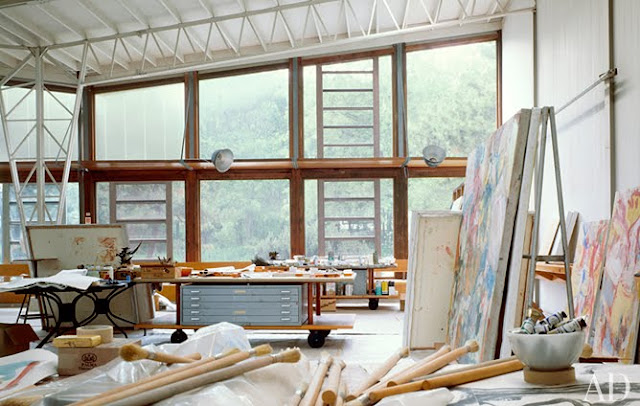My Dream Art Studio:
- Huge windows on at least one wall up to the ceiling.
- North Light coming from above and plenty of artificial light for painting at night if need be. though I hate painting in artificial light. Check out my blog post about choosing the best bulbs for an art studio.
- High Ceilings
- Room for 3 large tables and one large wall dedicated to creating large abstract paintings
- Room for a library- sometimes I like to take breaks between paint layers/stages and reading helps me unwind while getting my creative juices flowing.
- A dedicated area for my art supplies. Organized and labeled (I love organizing and labels!) and artwork
- Room for a couch and a mini fridge, maybe a sitting area
- Room to hold classes/paint parties
- Large monitor next to my easel for reference.
- Large desk with a Mac desktop and a good quality printer
- Far away from any noise and distraction, preferably on the second floor.
- Lots of wall space to hang inspirational artwork
- Really good ventilation
- Surround Sound
- Large flat screen TV, because sometimes I want to watch episodes of Peaky Blinders or Game of Thrones when I am painting
- Oh did I mention everything is white? Walls, tables, shelves... I know I am weird.
- Poured concrete floors
- Exposed beams
- An assistant...








